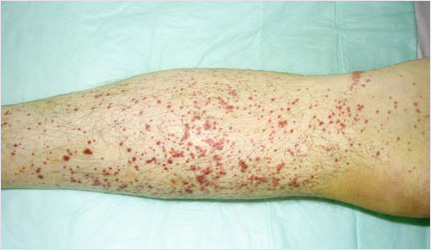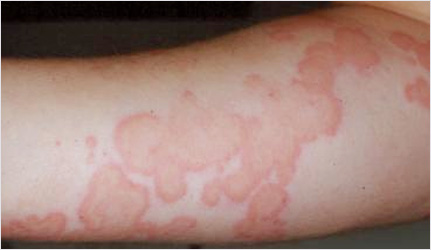
Vasculitis is a term for a group of rare diseases that have in common inflammation of blood vessels. These vessels include arteries and veins. There are many types of vasculitis, and they may vary greatly in symptoms, severity and duration. Most typesof vasculitis are rare, and the causes are generally not known. Vasculitis affects persons of both sexes and all ages. A few forms of vasculitis affect certain groups of people. For instance, Kawasaki disease occurs only in children. IgA Vasculitis (Henoch-Schönlein) is much more common in children than adults. On the other hand, giant cell arteritis occurs only in adults over 50 years old.
Vasculitis can result in poor blood flow to tissues throughout the body, such as the lungs, nerves and skin. Thus, vasculitis has a wide range of signs and symptoms (what you see and feel), such as:
1) Shortness of breath and cough
2) Numbness or weakness in a hand or foot
3) Red spots on the skin ("purpura"), lumps ("nodules") or sores ("ulcers")
We do not know what causes most types of vasculitis. Genetic factors (different genes) appear be somewhat important in the disease. Vasculitis is thought to be an autoimmune disease, which means the body comes under attack by its own immune system. In vasculitis, the immune system attacks blood vessels. Some cases of vasculitis are caused by reactions to medicines. Also, some chronic (long-term) infections, including with hepatitis C or hepatitis B virus, can cause vasculitis.
Vasculitis can be a part of other rheumatic diseases, mainly including systemic lupus erythematosus, rheumatoid arthritis and Sjögren's syndrome. Most patients with vasculitis have none of these diseases.

For most patients, doctors can detect the type of vasculitis based on the size of the affected blood vessels (see Table) and the organs involved. To find small-vessel vasculitis, doctors most often do a biopsy, such as of the skin or a kidney. Detection of medium-vessel vasculitis happens by either biopsy (for instance, of skin, nerve or brain) or angiography. Angiography also is the test that often finds large-vessel vasculitis. Detecting giant cell arteritis often involves a biopsy of an artery in the scalp.
A few forms of vasculitis, such as Behçet's disease and Kawasaki disease, are usually detected on the basis of a collection of clinical findings rather than biopsy or angiography.
Some blood tests are so suggestive of a certain type of vasculitis that a positive (abnormal) test can be enough evidence to help doctors make the diagnosis. The most useful of these tests is for "antineutrophil cytoplasmic antibodies"-often referred to as ANCA. A positive ANCA test can help detect these types of vasculitis: granulomatosis with polyangiitis (Wegener's), microscopic polyangiitis or eosinophilic granulomatosis with polyangiitis (Churg-Strauss). Other lab tests can show damage to organs, but the tests are not enough to prove vasculitis.
